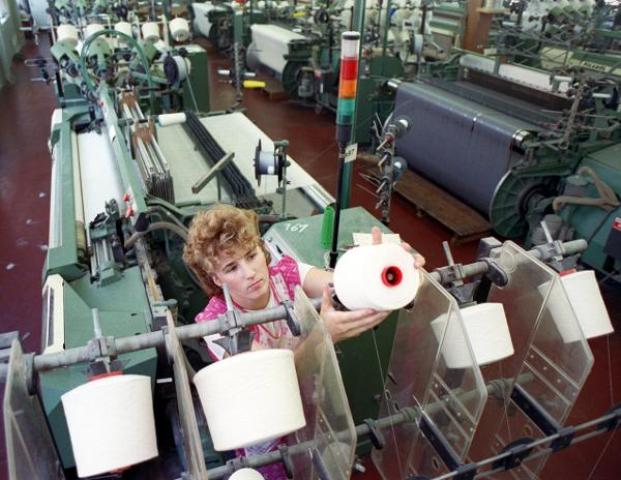Source

Source: picture-alliance/ ZB (c) dpa – Report Photo: Wolfgang Thieme
Before World War II, the textile industry was one of central Germany's most important economic sectors. After 1945, its relative importance decreased; in 1982, the textile sector produced 6.1% of all GDR industrial goods, putting it eighth on the industrial-sector productivity list. But the traditional importance of the textile industry, especially in Saxony, could still be seen in the fact that 51.5% of its gross output was concentrated in the district of Karl-Marx-Stadt (today: Chemnitz). In the Saxon town of Crimmitschau, the tradition-rich firm Spengler & Fürst has been producing cloth since 1837. The privately-owned firm was nationalized during the GDR, but only in 1972. After being re-privatized in the wake of German unification, Spengler & Fürst successfully positioned itself on both the German and international markets with its high-quality outerwear for men. Approximately 18,000 people were employed in the East German textile industry in the middle of 2008 – of them, almost 12,700 worked in factories with more than 50 employees.

Source: picture-alliance/ ZB (c) dpa – Report Photo: Wolfgang Thieme